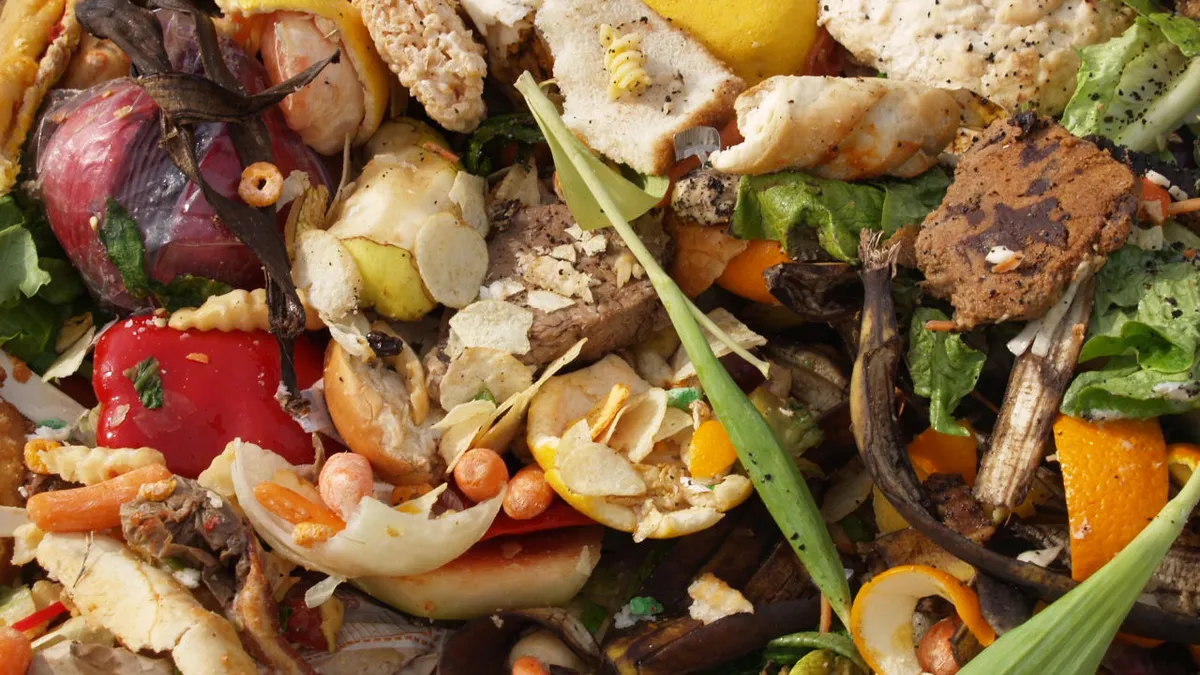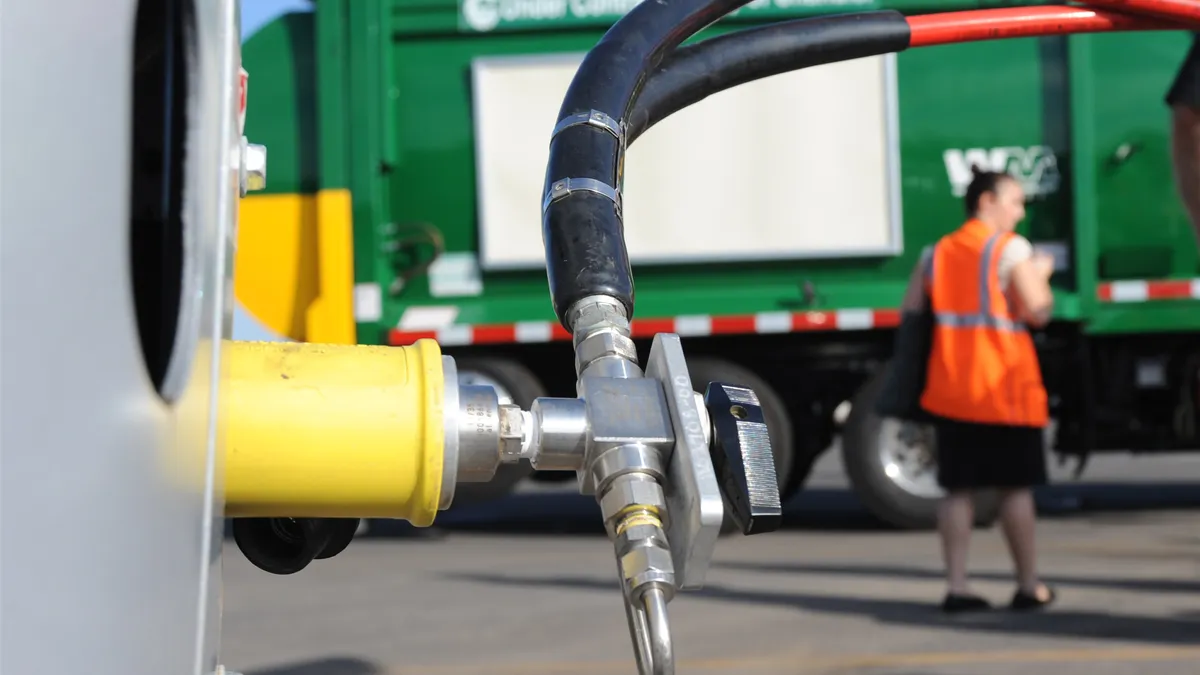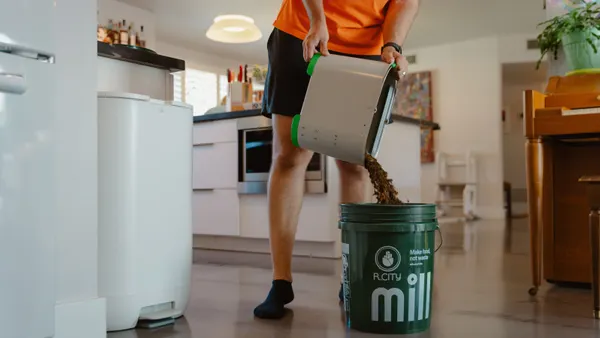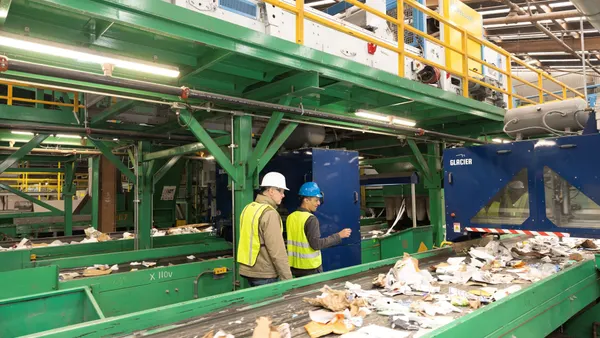Editor's Note: The following is a contributed piece. More information on what that entails, and how you can submit one, is available here.
In response to the perception that organics collection can be overly expensive, we’ve assembled a list of key factors to consider for cost-effective food waste diversion strategies.
Recycling commercial organics can make business sense. It does, however, threaten traditional municipal solid waste haulers who do not collect source-separated food waste — while at the same time offering opportunity for those currently engaged in the organics sector. Institutions and private companies should also pay attention in order to take advantage of potential cost savings as well as increased diversion from disposal.
Consider reduction and volume
In accordance with the EPA’s Food Recovery Hierarchy, the first thing a business can do is reduce their waste through both smarter ordering and innovative marketing to potentially create new products. Businesses can also donate surplus to feed people, with such programs sometimes providing significant cost savings and tax rebates.
Volume is another main driver of whether an organics recycling program is economical. Generators that produce a significant amount of volume are more likely to be able to implement a cost-effective organics recycling program. Generating large amounts of clean organics can net an account better pricing from haulers and processing facilities. Recycling smaller amounts of more contaminated food waste streams, on the other hand, is less cost-effective due to higher transportation costs and serious concerns around contamination.
Know your streams
After assessing those initial factors, it’s also important to take a close look at what type of material is being generated. Both customers and service providers stand to benefit in the right scenarios.
Food manufacturers might generate consistently large amounts of organic waste from their operations or have one-off gluts of recalled or discontinued products. It might be packaged or “clean” (devoid of packaging). All of these factors play a large role in the economic feasibility of diverting this material from disposal.
In general, large generators of consistent, un-packaged (or “contaminated”) food waste will always be the most likely to see an economic benefit from diverting this material. Certain discarded product from food manufacturing — including meat, fat, bone or other animal components — can be highly desirable to the rendering industry.
If the products do not contain ruminant proteins or seafood (and sometimes, even when they do), these organics can have substantial value in the animal feed industry. For example, bakery waste has a very efficient recycling industry focused on this specific stream. This material is collected and processed into animal feed, often with a rebate coming back to the generator.
When vegetable and fruit waste is mixed with animal proteins, the options become more limited. They may include composting and anaerobic digestion, as well as newer outlets such as black soldier fly production. Composting programs are more likely to accept materials such as paper products and compostable food service ware than anaerobic digestion programs, which can affect landfill diversion rates. Fertilizer production programs are usually stricter regarding the specific mix of materials being recycled.
“Back-of-house” programs in restaurants, hotels, and cafeterias that collect food preparation scraps or unsalable products are generally less contaminated, as companies usually have more control over their own employees than the public.
“Front-of-house” material, which comes from bins accessible to patrons, can prove much more difficult. In “closed” venues such as prisons, airports or sports arenas, where access to outside materials is more limited, institutions can have more control over the materials that need to be separated. Front-of-house programs tend to be more voluminous and less dense, so some efficiencies are also lost in the transportation of this type of material.
Know your market and know your service options
Specific market conditions determine whether it costs more to send organic materials to a disposal site or recycle them. In the Northeast and West Coast, where there are more regulations regarding food waste, there are also generally higher tipping fees. Those factors usually make it easier to justify an organics recycling program in these regions — but elsewhere, food waste haulers can sometimes simply beat MSW prices.
In addition to regional tip fees, it matters whether the load is a designated pickup or on a scheduled route. When there are separate hauling and tipping fees charged for MSW, such as for compactor and open top container pick-ups, organics can be more competitive because transportation is included in the price and organics processors are competing more directly with landfill tip fees.
Front-end-load dumpster prices are generally much harder to compete with, as weight isn't explicitly part of the cost equation and pick-ups don't have a separate hauling fee. Conversely, if an organics hauler is traveling great distances to pick up a small amount of material, these programs tend to be more expensive than existing MSW collection routes. For both MSW and organics, the denser the route, the cheaper the program.
Co-collection is another strategy that can drive transportation costs down. In this scenario, organics can be collected along with MSW in a different color bag, which can be sorted at transfer stations and/or MRFs. The ability to eliminate an entire fleet of trucks and drivers changes the economics substantially for residents and businesses alike.
Seek transportation efficiencies – especially for packaging
Distance to the nearest facility also plays a large role. If, for instance, the composting or anaerobic digestion facility is much closer than the landfill, the hauling fees can be lower in turn. Another factor to keep in mind is that private composting and anaerobic digestion sites can have higher tipping fees than publicly operated facilities.
Packaging is another major factor. Whether in the back room of a grocery store or in a distribution center, food waste that may have been recalled or expired is often still encased in plastic and/or other materials. This can present increased difficulty and cost both for generators and processors. However, de-packaging can be done mechanically, helping companies save on labor costs.
De-packaging facilities may be limited in some markets, so back-hauling is also a viable option. When a company manages its own fleet, that may allow for material to be consolidated at one central location rather than collected at multiple stops. Packaged food waste that is palletized can be shipped large distances via full or partial tractor trailer loads to facilities that can separate packaging from organic material for recycling. Freight costs have experienced rate hikes in the last year or so, which has its own financial implications.
Some companies have decided to invest in on-site processing, such as anaerobic digestion, at these collection centers. While developing this infrastructure also has costs, it eliminates the price of transportation from distribution or reclamation centers to organics processing facilities.
Combinations of on-site technologies and reduced hauling can also make collection more efficient. For example, dehydration can lead to reduced weight and volume as well as less pickup frequency. On-site slurry systems, where food waste is stored in tanks – sometimes under a vacuum – can reduce the number of pick-ups, which reduces cost. This technique usually works best when anaerobic digestion is available in the area.
Growing potential
Many organics haulers and processors are still starting up operations, resulting in high upfront costs. As collection ramps up in a given market, those prices are often falling as MSW prices climb. When source reduction is added to the mix, and organizations can better see what they’re wasting, they can also find more cost-effective upstream solutions.
Regardless of cost, many companies are clearly diving headlong into food waste reduction and recycling. Legislation is also mandating organics recycling in more markets, meaning that haulers as well as generators of food waste risk being left behind if they don't adapt. In addition, this changing landscape is providing increased opportunities for cost savings for some generators and business opportunities for haulers that get into the organics game.
Ryan Cooper is a waste diversion manager and organics recycling lead at Rubicon Global, a technology company rooted in the world of waste and recycling, with a mission to end waste.


















